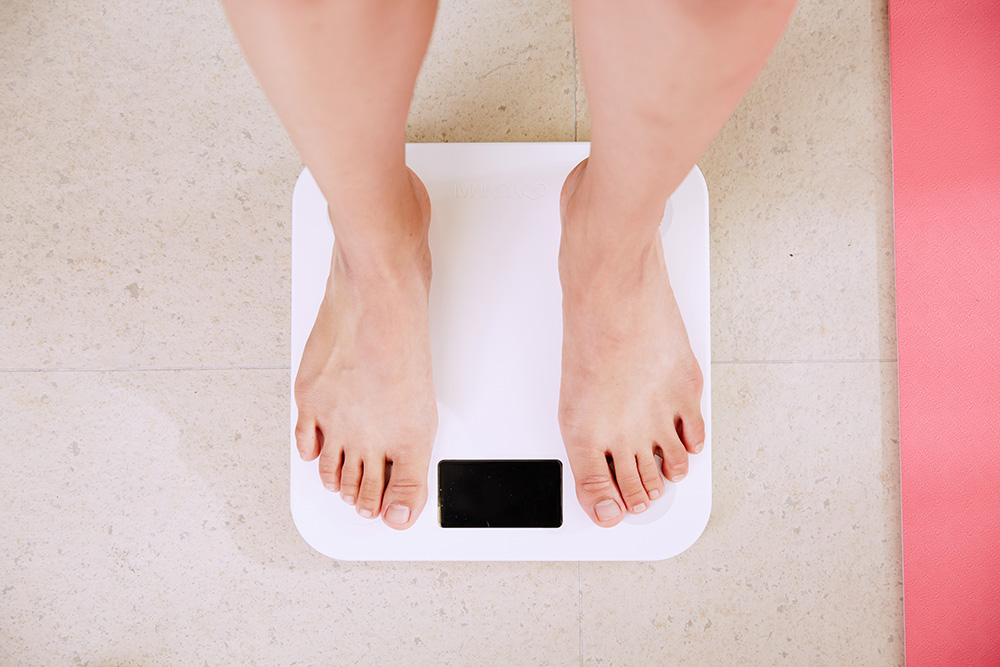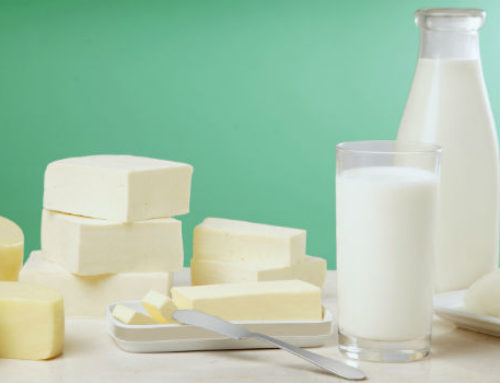Yesterday’s Malnutrition Has Become Today’s Overnutrition
Overnutrition is to blame for many conditions that could potentially affect all body organs: just pick which one! Here is what it has to show for:
- The intestines (small intestine and colon) are disturbed, overloaded, bloated, the subject has bad breath, intestinal transit time is too short, intestinal porosity, chronic inflammation.
- Fatty liver, which strongly weakens immune defenses, and triggers enduring fatigue. It doesn’t allow for useful physical activity, as much to the muscles that thin down as to the skeleton, which takes the path down to osteoporosis. Men are 7 times more often affected by fatty liver than women, although THE DIFFERENce is diminishing.
- The pancreas is overwhelmed by the excessive intake of sugar (true and false sugars), manufactures too much insulin, which cannot play its blood-sugar-levels balancing role any longer. Insulin resistance increases, which cause sugars to prioritize penetration into fat tissue.
- Fat tissue infiltrates all tissues, thereby modifying the body outlook. It can be source of psychological and affective suffering.
- Irregular breathing. Breathing gets more frequent and shorter, so less oxygen will flow into the body (for this reason, yearly vaccination against the flu will become necessary). It disrupts sleep, which no longer plays its restorative role. It frequently triggers sleep apnea and snoring, which disturbs the spouse.
- Kidneys’ filters deteriorate, and let sugars go through. Diabetes comes in, and with it all its heavy consequences with regard to treatments, skin complications (difficult scar healing, sensitivity to infections), urinary, neurological and visual complications in particular.
- Osteoarticular system inflammation, with joint pains at the hips, knees, dorsal and lumbar vertebrae;
- The brain gets into a more or less depressive and anxious state, which pushes many to turn to a dangerous tryptic: antidepressants, anxiolytics, and sleep aids , all of which only worsen the situation.
- Immune defenses become really deficient, which paves the way to cancer – breast, prostate, lymphoma – and all auto-immune diseases that have become a social scourge.
Let us step away from such nightmare, sadly very real, which is the cause for many worrisome health expenditures for increasingly younger patients.
Moreover, pessimism could lead us to think “I will never make it through, and medicine cannot do much for me.”
“Obesogenic” foods: sugar and alcohol
We manufacture our own body fat because we ingest excessive quantities of bad sugars and alcohol.
Don’t you infer from that that you shouldn’t eat any sugar, or that one cannot drink good or even excellent wine in moderation!
Bad sugars as well as alcohol are eminently toxic when consumed in excess. This is the case because they are addictive, and so much more than quality fatty foods that we need for our central and peripheral nervous system (a little raw butter, non-hydrogenated vegetable oils and in particular extra virgin olive oil, cold pressed walnut oil, colza, camelina…)
– Foods’ sugar content is indicated by the Glycemic Index
The glycemic index allows for a classification of foods according to their capacity to increase our sugar levels, more precisely the levels of sugar in the blood, within two to three hours following the entry of the food into our digestive tract.
Ideally, sugar levels should be at around 1g per liter of blood. Above this level, hyperglycemia happens, and risk of diabetes increase. Below this level, we are hypoglycemic, which triggers sensations of hunger, sometimes headaches, and makes us irritable.
Our colleague Thierry Souccar articulates it very well: “In order to calculate the glycemic index, we give volunteers 50g/1.7oz glucose dissolved in water: it serves as reference (GI = 100). We measure blood glucose every 30 minutes for 2 to 3 hours. We repeat this operation by giving the tested foods containing each 50g/1.7oz of carbohydrates (100g/3.5 oz white bread, 125g/4.4oz French Fries, 600g/21oz carrots).”
The findings: here are a few examples of common foods:
* Foods with a GI above 70 :
French white flour baguette (75-80), or made with whole wheat and yeast (75-80); breakfast corn flakes (80-90), overcooked potatoes (90-100); overcooked rice (75-80), overcooked pasta (70) ( as opposed to lighly/al dente cooked pasta : 60)…
* Foods with a GI ranging between 55 and 70 :
Al dente (lightly cooked) black rice (58), ripe banana (65), fresh pineapple (60), rolled oats (60).
* Foods with a GI below 55:
Lightly cooked lentils (30), raw apples or pears (38), grapes (50), dark chocolate >70% cocoa (22), raw milk cheeses aged 6 months and more (10-20).
– What sugar ? Let’s differentiate between “fruitose” and fructose, saccharose, glucose, and maltose.
What I will call “fruitose”, is the best of all sugars, because you find it in every fruit of the current season associated with the whole fruit, i.e. everything the fruit is made of: water, fibers, vitamins, minerals, oligo elements, polyphenols… Therefore, it is best when you eat it fresh, chewing it and tasting every flavor in your “Palate of Flavors.”
This “fruitose” can also be found in two types of honeys that can be prescribed to diabetics in small quantities: raw acacia and chestnut tree honeys.
Do not confuse “fruitose” for the sugar contents of compotes (apple sauces or other fruit compotes and spreads), roasted apples, or processed fruit salads, that contain the official, industrial fructose.
Fructose is a simple sugar (as is sugar contained in fruits). It will increase blood sugar only moderately (blood sugar = levels of glucose in the blood).
Today’s average consumption of fructose is very high, i.e. 165g per day per person, whereas the American Heart Association recommends no more than 200 sugar calories per day, i.e. 50g per day!
Be aware that 50% Americans drink one sweetened soda can per day, while 5% drink four cans. It is the same in Europe, and increasingly so in Nord Africa.
Overall, this means that 20-25% (up to 40% for teenagers) of calories stems from carbohydrates, i.e. 22 teaspoons per day of Glucose-Fructose syrup, better known as corn syrup.
Industrial apple pies in France contain glucose-fructose syrup. In agriculture, 5% of corn is transformed into Glucose-fructose syrup. It never contains any fibers, and is added to breakfast cereals.
On white bread, fructose fastens the Maillard browning reaction (it is also called glycation ); it gives part of foods aroma and an appetizing color (1). This reaction is 7 times as powerful than in the case of glucose. This reaction is the same as the one transforming hemoglobin (Hb) of the red blood cells into glycated hemoglobin, which shows for carbohydrates consumption of a subject in the two preceding months. The rate of glycated hemoglobin in blood helps to determine glucose concentration in the blood and to test for diabetes.
Fructose is essentially used by the liver, muscles and a in small part by the kidneys. It is used a little by the brain, which uses the glucose first, and then but slower, what I call the fruitose. During its passage through the intestines and into the blood, a high quantity of fructose (which is associated with nutrition imbalance) weakens the intestinal barrier, and can make it porous (leaky gut). It is mostly stocked in the form of glycogen in the liver, whereas glucose is used by all organs.
The liver needs more energy to metabolize fructose, which forces liver cells to use the energy Krebs cycle (2). This cycle recovers the energy all cells need in order to function.
This energy stems from the degradation of carbohydrates, fats and proteins, which break down and free glucogenic amino acids. The energy formation is possible thanks to an enzyme (for specialists: Adenyl-cyclase), which is from the protein family.
Research also has explained how excessive consumption of fructose leads to the formation of a special proteic waste called uric acid. Excess uric acid cumulates in the kidneys (which increases the risks of uric acid kidney stones in the urinary tract, as well as renal colic), the joints, with increase uric acid accumulation risks in the joint spaces, especially at the level of the big toes. This disease is called the gout, and it used to be called the “kings’ disease” or the disease of the wealthy. Since then, it has been widely “democratized”.
Saccharose or “table sugar” is a mix of fructose (50%) and glucose (50%), which is another simple sugar. It gives its color to sugar, and must be avoided as much as possible by people with weight issues.
Fruits juices are not recommended either, because they lack the most important element: fiber. The marriage of fruitose to fiber is faithful, profitable, and has a positive effect on your health. At every breakfast, it is not an orange juice that you should drink, but a fresh organic (peeled) orange, or an organic apple which you can eat whole.
Fiber – keep that in mind – slow down transportation of fruitose to the liver and the brain. Liver and brain thus get sugar on a need basis.
Beware of juice bars, even providing you with fresh fruit juices. Prefer fruit bars, that should be widespread, where you can get seasonal and local fresh fruit that you could bite into anytime, whether you are a child (as soon as he has teeth) or an elderly adult: they will help keep your teeth in shape.
Avoid smoothies with whole fruits, because then, fruits are not chewed. Oftentimes, sugar or/and dairy are added to smoothies. Lactose is a type of sugar, which only aggravates excess weight problems.
– Lactose, “lactoholism” and their dangers.
Milk sugar is a carbohydrate found in animal and human milk (from 65 to 80 g per liter). It is mainly present in cows’ milk (40 to 50g/liter) and also, in lower amounts, in goat milk (40-50 g/liter) and sheep (45-55g/liter).
We evidently ingest lactose in many different forms in various industrial products sold with the reinforcement of efficient advertisement campaigns and the support of nutritional advice provided by “health professionals”, who are more or less directly financially linked to the industry. So, let’s be prudent !
The ones containing most lactose are whole milks, skimmed milks. The highest concentration is found in whey.
Moreover, all types of creams (whipped cream, heavy creams, etc), yogurts and kefir (which is fermented milk with kefir grains) contain lactose. Ice-cream and custard have by far the highest concentration of lactose.
Cheese also contain lactose, be they fresh or white, like “fromage blanc”. Cancoillotte and Faisselle also have a high concentration of lactose.
Maltose is made of two glucose molecules, which stem mostly from corn starch, but it is also found in barley. Corn syrup can have high fructose contents (what is known as HFCS or high-fructose corn syrup). It is also known in its generic names, as glucose-fructose syrup or simply glucose-fructose.
Wheat syrup does not contain any gluten, but it is rich in glucose, and retains a high glycemic index.
Agave nectar or syrup, is a juice extracted from agave cores. It is low in glucose, high in fructose (70%).
Rapadura is dehydrated whole cane juice and muscovado sugar is a more caramelized sugar from Mauritius and the Philippines, where it is called “Mascobado.” Neither of them is refined. They have an amber color and remain in the state of powder. They have the advantage of having the excellent mineral contents (potassium, magnesium, calcium), vitamins (A, B3, B5, B6 and B9), and amino acids of sugar canes, that are very useful to our health.
Glycogen, starches and fructan
Glycogen is the complex carbohydrate (8 to 12 glucose chain molecules) that we stock in our liver and muscles. Our body supply of glycogen does not last more than 10 days, with normal physical activity, and it is depleted much faster if you run a marathon. Glycogen is found in animal meats and in mushrooms. When our body demands it, it releases the glucose molecules that are needed.
Glycogen was discovered first by Claude Bernard (1813-1878), the inventor of experimental medicine. In 1855, he introduced a tube in the portal vein, at the entryway to the liver and drew a sweet substance. This substance was identified as glycogen in 1857.
Starches (in French amidon, from the latin amylum = not milled) is an equivalent of glycogen, the sugar reserve of plants, energy substrate that stems from photosynthesis. They are found in potatoes, rice, sweet potatoes, corn and different types of wheats. They are a complex type of sugar that is composed of chain molecules of simple sugars. For example, amylose is composed of a line of 600 glucose molecules.
Fructans are made of a chain of fructose molecules, from 3 to 50. They are found in artichokes, asparagus, beans, broccoli, cabbages, leek, onions, peanuts, tomatoes, zucchini. Among them, are inulin, levans manufactured by bacteria, and graminans. All are excellent probiotics.
Hidden sugars
They are found in all industrial foods, and in foods that have been cooked too long. In the process of cooking meat and fish proteins are partly broken down, uncoiled into amino acids, some of which can be transformed into sugar. These are called glucogenic amino acids, and they can be stocked in the form of glycogen. Specialists call the process neoglucogenesis. It can be hepatic or intestinal, depending on our bodies’ needs.
So, sugar is everywhere and we don’t realize it because it does not necessarily taste sweet. Soups, sandwich bread, cookies, snack chips, ketchup, tomato sauces, soy, charcuterie, sauces, vinaigrettes, balsamic vinegar, bouillon, all prepared dishes, including frozen foods, contain sugar.
We are manipulated: the food industry pretends it cares about our health. However, business always comes first, the goal being that consumers keeps consuming! Perhaps it is about to change, since the awareness of the wider public is increasingly clear.
How Our Bodies Process Fake Sugars: Beware of Sweeteners
Sweetening Power: A Forgotten Notion
The reference value is the sweetening power of saccharose, which by convention has a value of 1. White sugar is manufactured from sugar beet or refined cane sugar. Brown sugar can be either semi-whole cane sugar, or white sugar that has been colored with caramel or molasses (read the labels!). The sweetening power of lactose is weak, 1/16th of the one of saccharose/table sugar. This is why people addicted to sugar tend to add a little sugar to sugar (the second sugar being milk, yoghurt, etc.)
Fructose has the same caloric value as saccharose (4.2kcal/g) but its sweetening power is higher (SP= 1.3 and 1 respectively.) That’s why they try to classify it as (calorie-free) sweetener.
Glucose has a weak sweetening power (between 0.7 and 0.75).
In baking, confectionary, ice-cream-making, they assess the sweetening power on a scale of 100, which is equivalent to a sweetening power of 1 in saccharose or maltose.
Beware of Calorie-Free Sweeteners!
These are fake sugars. They may have a strong sweetening power without having the same characteristics of classic sugars, i.e. the calories. But they are meant to feed our addiction to sugar. Remember that since your tastebuds change when they renew every ten days, you can change your taste and lower your need for the sweet taste progressively! The best way to be rid of sugar calories is to decrease our inclination for sweet tastes.
In the deceptive role they play, they can disrupt the normal processing of sweet products in our body and trick our system of appetite regulation, which also contributes to the preservation of excess body fat and a disruption of the control of our glycemia. We should do everything we can to avoid them.
- The first created calorie-free sweetener was saccharine, which possesses a sweetening power 300 to 500 superior to the one of table sugar. While it is eliminated through our urine, it is toxic in the long term and suspected to increase risks to contract bladder cancer.
- Aspartame has a sweetening power 200 superior to sugar. We should not forget the serious concerns regarding the dangers of aspartame consumption on a daily basis. Among complications, we suspect an increase in risks of brain tumors, the worsening of depression, risks of convulsions, and even epilepsy crisis’s in children. Consumers should abandon this product.
- Xylitol, extracted from birch and beech bark, has the same sweetening power as sugar ( SP=1) but its sweetening power is inferior by half ( 2.4 kcal/g)
- Stevia has a sweetening power 300 times superior to sugar (a box of 20g/0.7 oz would be equivalent to 6kg/13 lbs sugar!). Sweetening with the ground leaf (non-processed) is the ideal, and gives it a little liquorice after-taste. Stevia is not dangerous.
- Acesulfame Potassium (K) has a sweetening power 100 to 200 superior to table sugar. You can find in soda, dairy (ice-cream, desserts, yoghurt, jam, breakfast cereals)
– Alcohol: From Wine to Hard Alcohol
Wine can be healthy so long as it is ingested in moderation, one glass of wine at every meal for women, and two for men, i.e. no more than 8.5 oz per day.
When you chose it, buy preferably organic, and be aware that the best wines are not necessarily Bordeaux or Burgundy wines. There is a great variety of wines in France, but also beyond the Mediterranean region, and in America).
A small dose of alcohol from wine increases the amount of good cholesterol HDL and polyphenols from tannins with resveratrol, which increases insulin sensibility (as opposed to insulin resistance in diabetics). But beware of overindulgence!
Hard alcohol: Their alcohol content is superior to 18°, it can reach 40 up to 90° in plant-based spirits, 40 to 60 for cane sugar alcohol, 55° and over for plant-based liquors, 40° and more for Armagnac and Cognac, which are obtained through the distillation and aging of grapes.
Do not forget that a standard glass of wine always contains 10g alcohol, i.e. 70 calories, which equivalents are:
10 cl / 3.4 oz wine = 25cl /8.4 oz beer = 2,5cl/0.84 oz digestive = 10cl/3.4 Champagne or sparkling wine = 7cl/2.3oz aperitif alcohol = 2,5cl/0.84 oz whiskey = 2,5cl/0.84 oz de Ouzo or Ricard (anise-based liquors)
What do excess sugar and alcohol become in our bodies?
The classification in simple, fast-acting, slow or complex sugars is out-of-date.
Carbohydrates’ role consists in maintaining the balance of glucose levels in the blood at 1g per liter of blood. We talked before about the impact of the glycemic index of foods (GI).
The ideal amount of carbohydrate consumption in our nutrition shouldn’t be higher than 50g/1.7oz per day, i.e. 200 calories, as recommended by international institutions.
However, in our societies, food advertisements are overwhelming, from morning to evening. Marketing efforts reach us through advertisements and make us ingest more than the recommended 50g/1.7 oz per day. In Europe, we ingest twice that amount per day, i.e. 30 kg/66lbs sugar per year per person.
Glycemic regulation depends upon two hormones manufactured by the pancreas: glucose-lowering insulin and blood-sugar-rising glucagon. Since our carbohydrates’ consumption is far superior than health and wisdom would command, our body most often solicits insulin. You could talk of hyper-insulinemia, which could lead to insulin-resistance.
Insulin resistance is triggered by a tired pancreas, exhausted by too frequent requests for release after sugar consumption, which keep triggering insulin release in excess. Insulin then turns away from its initial function: instead of participating to the sugar entry into the cells, it lets it transform into fat in our fat tissue (see letter 1).
Keep in mind that 25% excess fructose that you ingest will be converted into fat tissue.
Sugars being everywhere in our foods, pancreas is permanently overburdened, and all the more since it participates to the digestion of fats with pancreatic fluid that it is tasked with manufacturing every day (1L per 24hours.)
Moreover, pancreas does not like excess alcohol, which could intoxicate and destroy it, for example, when we binge drink. Binge drinking is to blame for the increasing number of acute pancreatitis in young people.
Lactoholism, fructoholism, alcoholism, here are obesogenic nutrients which consumption you should progressively reduce, without stressing out. Attentively tasting what you ingest, and being aware that you won’t get trapped any longer.
We tell you how in our third letter.
Best,
Professor Henri Joyeux
(1) Bread or meat protein that have been overcooked through deep-frying, oven-cooking, or roasting) partially uncoil into “glucogenic” amino acids. Overcooking also generates the formation of an officially recognized dangerous toxic and carcinogenic substance called acrylamide.
(2) What we call “Krebs Cycle” was discovered in different stages, from 1939 by Hungarian biologist Albert Szent-György (1893-1986), nominated Nobel Prize of Medicine in 1937. The cyclic operation was explained by German biochemist Hans Adolf Krebs (1900- 1981), who was nominated for Nobel Prize of Medicine in 1953.
The Letter of Professeur Joyeux is an independent and free information service. It specializes in providing the wider public and families with disease prevention information.
These health information is provided free of charge by this organization and cannot be considered as personal medical advice. No treatment should be initiated solely on the basis of this content. It is strongly advised to consult a properly licensed health professional to seek responses with regard to one’s health and well-being. No information or product mentioned on this website is meant to diagnose, treat, atone or cure a disease.
You have a Personal Health Question? (Confidential response) or you wish to enjoy our exclusive services? Become an exclusive member of our association for one year by clicking HERE
You have a Personal Health Question? (Confidential response) or you wish to enjoy our exclusive services? Become an exclusive member of our association for one year by clicking HERE






